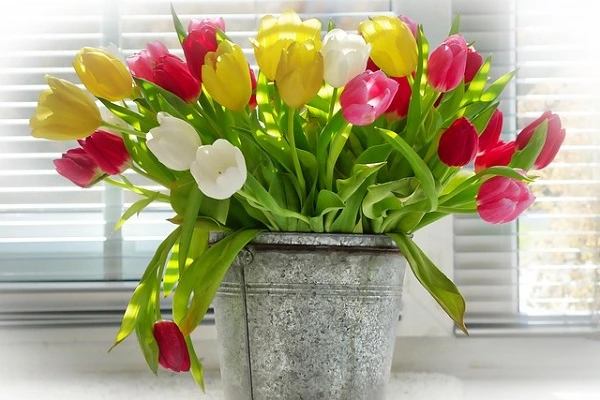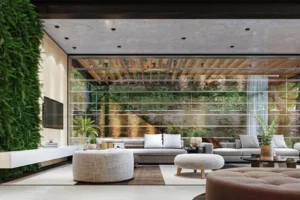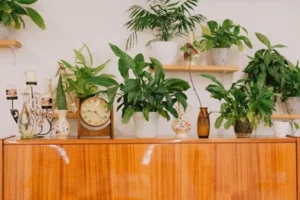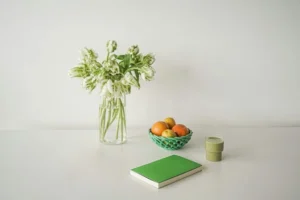If you’re short on space but still dream of growing your own lush tomatoes, peppers, or even cucumbers, the Dutch Bucket System might just be your new best friend. This clever hydroponic setup is designed specifically to support bigger, fruiting plants—no sprawling backyard required.
The system works by using individual containers—called “buckets”—that share a common water and nutrient supply. It’s efficient, low-maintenance, and surprisingly easy to build. Each bucket supports a single plant, allowing roots to stretch deep without competing with neighbors. That means you get healthier, more productive crops in a tidy, compact format.
Lately, there’s been a surge in do-it-yourself hydroponic projects, especially in city apartments and homes without traditional garden space. People are discovering that growing food indoors or on balconies isn’t just possible—it’s rewarding and fun. With rising food costs and a growing focus on sustainability, more folks are turning to hydroponic gardening as a practical solution.
The Dutch Bucket System is especially ideal for vertical gardening. Its modular design fits seamlessly into small corners or unused wall space, making it perfect for urban dwellers. Whether you’re a first-time grower or an experienced hobbyist, this method makes cultivating your own vegetables and herbs not only doable but deeply satisfying.
What is the Dutch Bucket System?
So, what exactly is the Dutch Bucket System—and why is it a favorite among indoor hydroponic growers looking to go vertical? At its core, it’s a recirculating system designed to support larger, heavy-feeding plants in compact spaces.
Each plant gets its own bucket, connected by a network of tubing that delivers nutrient-rich water from a shared reservoir. A small pump sends the solution through the system at regular intervals, ensuring every plant gets what it needs without overwatering or waste.
One of the standout features? The buckets drain back into the reservoir after feeding. That means fewer spills, better control over nutrients, and very little water waste—something city growers can definitely appreciate.
Let’s break down the setup. First, the buckets themselves. Typically, 3 to 5-gallon containers are used. You’ll want something sturdy, easy to drill into, and ideally light-resistant to prevent algae growth.
Next is the growing medium. Since you’re not using soil, options like perlite, expanded clay pellets, or hydroton are common. These provide great support and allow water and oxygen to flow freely to the roots.
The water pump is the engine of the system. It circulates the nutrient solution through tubing, often controlled by a timer to avoid constant saturation. Finally, there’s the drainage system, which lets gravity pull excess solution back to the reservoir for reuse.
Compared to other vertical methods like the Kratky method or Nutrient Film Technique (NFT), the Dutch Bucket System is in a league of its own. Those systems work well for leafy greens and herbs, but struggle when it comes to supporting deep-rooted or fruiting plants.
The Dutch Bucket approach provides individualized root space and consistent feeding—ideal for tomatoes, squash, and similar crops. Plus, its modular design means you can stack or arrange buckets however you like, making it a flexible choice for tight living quarters.
Why the Dutch Bucket System Works for Larger Plants in Small Spaces
When you’re growing in a small apartment, every inch counts—especially when your plants have big ambitions. That’s where the Dutch Bucket System really shines. It gives larger crops the deep root space they need, without turning your living room into a jungle.
Each bucket acts like a private room for the plant’s roots. No competition, no crowding. This setup allows tomatoes, peppers, and cucumbers to stretch out below the surface—even if you’re tight on square footage above it.
Now, let’s talk about verticality. While other hydroponic systems tend to spread out, the Dutch Bucket System lets you build up. Stack your buckets on shelves or align them in narrow rows against a wall. The structure works with your space, not against it.
Water use is another area where this system earns points. The closed-loop design keeps things efficient. Nutrient solution flows through the system, drains back into the reservoir, and gets reused. That means fewer refills and way less waste—perfect for apartment living.
What’s more, this system is incredibly customizable. You can tailor it to your favorite crops, whether you’re into juicy tomatoes or crunchy bell peppers. Want to go vertical with two levels? Add more buckets. Have a window ledge? Make a compact version to match.
With a bit of creativity, the Dutch Bucket System becomes more than just a hydroponic setup—it’s a smart design solution for growing big in small spaces.
Setting Up the Dutch Bucket System in Your Residential Interior
Getting your Dutch Bucket System up and running inside a small apartment might sound like a challenge—but it’s completely doable with the right setup. The key is finding a spot that supports light, airflow, and access to power for your pump and optional grow lights.
Start by scouting a place near a sunny window. South-facing windows are ideal, especially if you’re growing crops that need plenty of light. No sunlight? No problem. Grow lights are an excellent backup and can be easily mounted above your buckets.
Once you’ve picked your space, it’s time to gather materials. Here’s a simple list of what you’ll need:
- 3–5 gallon buckets (1 per plant)
- Net pots or plant holders
- Hydroponic medium (like perlite or clay pebbles)
- Submersible water pump
- PVC pipe or flexible tubing
- 1 large reservoir (a sturdy storage bin works great)
- Timer (for water cycling)
- Drill with hole saw
- Optional: LED grow light system
To set things up, begin by drilling holes in your buckets—one near the bottom for drainage and another on top for the tubing. Arrange your buckets in a straight vertical line or on staggered shelves, depending on your available wall space.
Next, install the water pump inside your reservoir. Connect tubing from the pump to each bucket’s intake. Then, run a return line from the drainage holes back to the reservoir. Gravity will do most of the work, bringing excess water back down for reuse.
Make sure the tubing connections are snug and leak-free. Turn the pump on for a test run and watch how the nutrient solution flows. Adjust your timer to run short, regular cycles—this keeps your plants well-fed without overwatering.
If you’re using grow lights, hang them 12–18 inches above the plant canopy. Adjustable arms or ceiling mounts work well in small spaces. Aim for 12–16 hours of light daily, especially for fruiting varieties.
One more perk? The Dutch Bucket System is surprisingly budget-friendly. Most of the supplies can be found at local hardware stores, and once it’s set up, ongoing costs are low. It’s a smart way to grow robust plants indoors without draining your wallet—or your living space.
Best Plants for the Dutch Bucket System in Small Apartments
The Dutch Bucket System is perfect for plants that need deeper roots and steady nutrients—things that traditional vertical hydroponic setups can’t always provide. This makes it ideal for fruiting and vining plants that grow tall or bushy.
Here are five top picks for your system:
Tomatoes
They thrive when trained vertically and love the consistent water and nutrients from a bucket setup.
Cucumbers
Compact when trellised, cucumbers grow quickly and stay productive with stable root support.
Peppers
Perfect for small spaces, peppers produce high yields without needing much room or sprawling roots.
Herbs
Basil, oregano, and cilantro fit easily into smaller buckets, making great companions to bigger plants.
Leafy Greens
Lettuce, spinach, and arugula grow fast and don’t need as much root space, offering quick harvests.
By mixing tall growers and compact crops, your Dutch Bucket garden stays efficient, productive, and perfectly suited for a small apartment.
Benefits of Using the Dutch Bucket System for Vertical Gardening
One of the biggest advantages of the Dutch Bucket System is how well it uses vertical space. In apartments where every square foot matters, stacking plants upward instead of outward lets you grow more without feeling crowded.
Beyond saving space, there’s real satisfaction in growing your own food at home. In a busy city, being able to harvest your own tomatoes or herbs right from your living room is both rewarding and practical. It brings a little green oasis into urban life.
The system also supports healthier plants overall. Since you control the water and nutrient delivery, your crops get exactly what they need—no guesswork involved. Healthier roots mean faster growth, bigger harvests, and fewer issues along the way.
Maintenance is another area where the Dutch Bucket System stands out. Without soil, you eliminate many common pests and diseases right from the start. That means less time troubleshooting problems and more time enjoying your plants.
For anyone looking to grow upward, stay self-sufficient, and keep things low-maintenance, the Dutch Bucket System offers a smart, sustainable path.
Maintaining Your Dutch Bucket System Over Time
Keeping your Dutch Bucket System running smoothly isn’t complicated, but a little regular care goes a long way. Start by cleaning your buckets, tubes, and pump every few weeks. A simple rinse with mild hydrogen peroxide or vinegar water helps prevent algae and mineral buildup.
Managing your nutrient solution is just as important. Plan to fully swap out the solution every two to three weeks. Larger plants are heavy feeders, so make sure to check nutrient levels regularly and adjust as needed to keep them thriving.
Plant care is another key to success. As your crops grow, prune away excess leaves and branches to boost airflow and light exposure. Train vining plants upward using trellises or support stakes to maximize your vertical space.
Finally, keep an eye on plant health. Watch for signs of nutrient deficiencies like yellowing leaves, or any spots that could hint at pests or mold. Catching problems early keeps your vertical garden productive and stress-free.
Key Takeaway
The Dutch Bucket System is an excellent solution for growing larger plants in small living spaces. It optimizes vertical space, making it ideal for apartments, and offers a simple, efficient way to cultivate a variety of crops indoors.
With just a bit of setup and care, you can create your own thriving vertical garden. Whether it’s tomatoes, peppers, or herbs, this system can provide a consistent, rewarding harvest right at home.
If you’ve been looking for a way to grow your own food in limited space, give the Dutch Bucket System a try. It’s a practical, space-saving method that brings the joy of gardening into your apartment.




